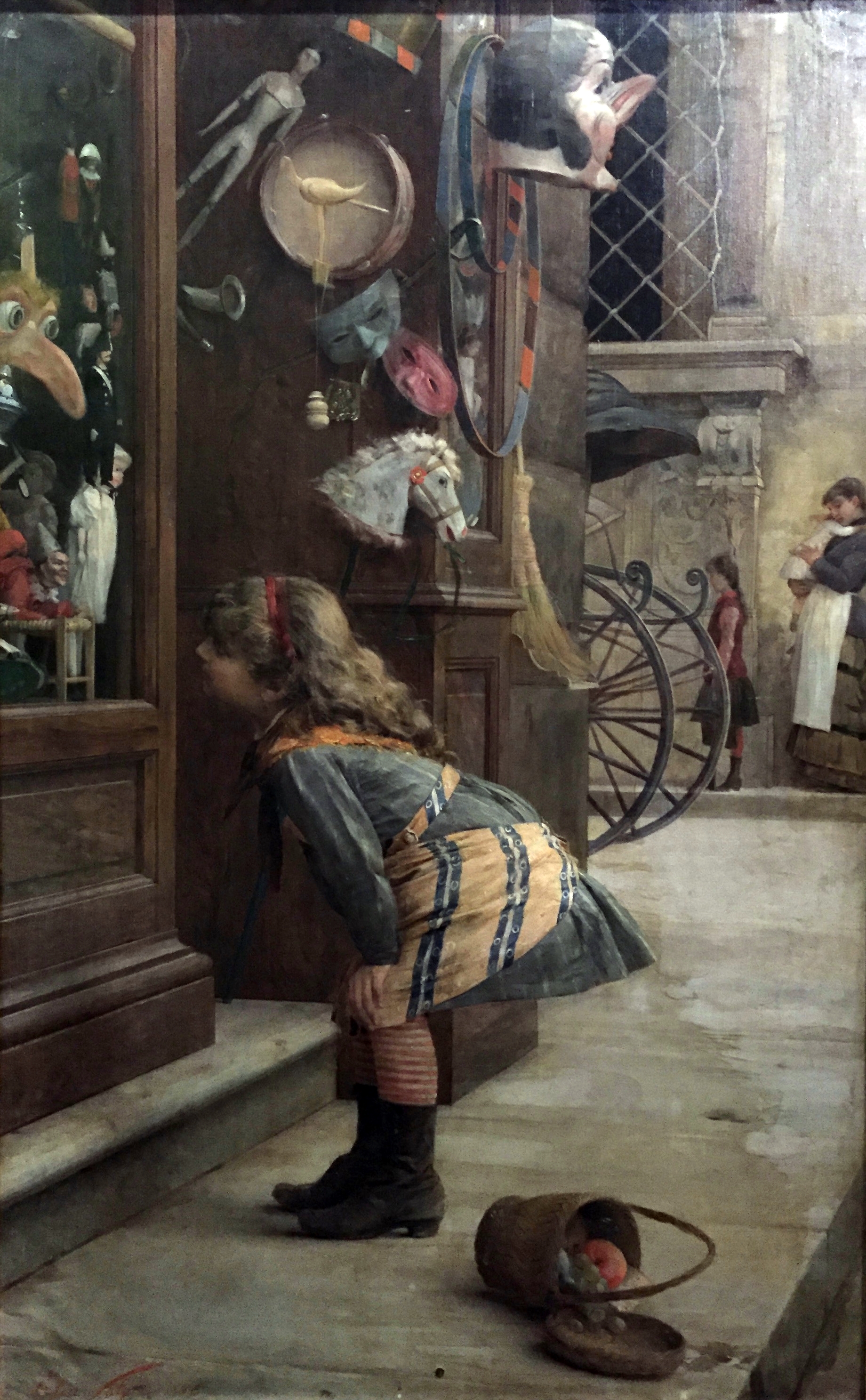Eduard Veith (
1858-1925) was an
Austrian portrait painter and stage designer.
Many of his works were influenced by
Symbolism.
He was born to the decorative painter, Julius Veith (1820-1887), and his wife Susanna, née Schleif (1827-1883).
At first, he received training to follow in his father's profession.
Later, he went to Vienna, where he took classes at the Museum of Applied Arts from Professor Ferdinand Laufberger.
He capped off his studies by creating sgraffito for exhibition buildings at the Exposition Universelle in Paris.
He then returned home, where he assisted his father with painting churches, synagogues and other ceremonial buildings.
This was followed by several study trips; to Italy, Belgium and Tunisia.
He finally settled in Vienna; becoming a free-lance artist and working mostly by commission.
From 1890, he was a member of the Vienna Künstlerhaus.
In 1896, he received a gold
medal at the Große Berliner Kunstausstellung.
In 1905, he was appointed a Professor at the University of Technology.
In 1911, he married Bertha Griesbeck (1872-1952), from Augsburg.
He later taught at the University of Applied Arts Museum of Applied Arts, and became a Professor there in 1920.
During his years in Vienna, he maintained contact with his home town, and held exhibitions there.
In addition to his paintings, he did interior decorations for a number of the buildings on the Ringstraße, and trompe l'oeil stage sets.
He often collaborated with the architects, Fellner and Helmer, who built dozens of theatres and opera houses throughout the Austro-Hungarian Empire.
He died shortly before his sixty-seventh birthday, and was interred at Döbling Cemetery.
His grave is adorned with a sculpture by Georg Leisek. | Source: © Wikipedia
Molte delle sue opere furono influenzate dal
Simbolismo.
Nacque dal pittore decorativo Julius Veith (1820-1887) e da sua moglie Susanna, nata Schleif (1827-1883).
Inizialmente ha ricevuto una formazione per seguire la professione di suo padre.
Successivamente si recò a Vienna, dove prese lezioni al Museo delle Arti Applicate dal professor Ferdinand Laufberger.
Ha coronato i suoi studi creando graffiti per gli edifici espositivi dell'Exposition Universelle di Parigi.
Tornò poi a casa, dove aiutò il padre a dipingere chiese, sinagoghe ed altri edifici cerimoniali.
Seguirono numerosi viaggi di studio; verso Italia, Belgio e Tunisia.
Alla fine si stabilì a Vienna; diventando un artista freelance e lavorando principalmente su commissione.
Dal 1890 fu membro del Künstlerhaus di Vienna.
Nel 1896 ricevette una
medaglia d'oro alla Große Berliner Kunstausstellung.
Nel 1905 fu nominato professore presso l'Università della Tecnologia.
Nel 1911 sposò Bertha Griesbeck (1872-1952), di Augusta.
Successivamente insegnò al Museo di Arti Applicate dell'Università di Arti Applicate e lì divenne professore nel 1920.
Durante i suoi anni a Vienna mantenne i contatti con la sua città natale e vi tenne mostre.
Oltre ai suoi dipinti, realizzò decorazioni interne per numerosi edifici sulla Ringstraße e scenografie trompe l'oeil.
Collaborò spesso con gli architetti Fellner and Helmer, che costruirono decine di teatri e teatri d'opera in tutto l'impero austro-ungarico.
Morì poco prima del suo sessantasettesimo compleanno e fu sepolto nel cimitero di Döbling.
La sua tomba è ornata da una scultura di Georg Leisek. | Fonte: © British Wikipedia



























